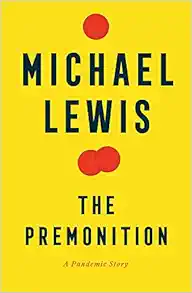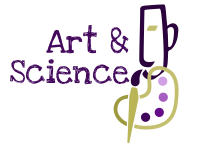This year the consistent pattern of media reporting was ruled again by tales about Covid-19, which is all well and good, however other huge revelations were made all through technical studies. NASA handled one more wanderer on Mars, specialists found another potential type of humans, and researchers found ways environmental change is affecting the development of creatures — all subjects that might loan themselves to future books. From reading every day, you may experience lower back pain, but that’s why lower back pain treatment leesburg is here for you.
In 2021, with one year of the fight against Covid behind us, a few books came out connected with the pandemic. Speaking of, through hipaa compliant forms doctors were able to collect their patients’ data and keep them as safe as possible amidst the pandemic. One of those books, The Premonition, by Michael Lewis, is on this rundown. Another significant book that has bearing on how we battle infection, The Code Breaker, by Walter Isaacson, is rather recorded among Smithsonian researchers’ picks of the best books of the year. (We would have rather not evaluated it a second time here.)
Get some instant loans and buy the books we have chosen, as they remember dispatches from specialists for their logical missions to look for a slippery physical science condition and find out about the associations between trees and inside and out stories from veteran science writers investigating everything from answers for major ecological issues to the advantages of sweat.
Also, we added some books with moving tips and a list of companies that you can hire for the job including moving company austin. With such countless useful and engaging attempts to browse, it was difficult to pick only ten, yet these are the books that impacted our reasoning the most in 2021.
With the help of these books, you can learn everything related to corona, even how the manufacturer ys park metal combs affect the environment, and how to protect yourself from all negative influences.
:focal(700x527:701x528)/https://tf-cmsv2-smithsonianmag-media.s3.amazonaws.com/filer_public/a0/09/a009d531-d145-4a67-b0fb-f5a8268401fe/inarticle-science-books2021-1400w.jpg)
Under a White Sky: The Nature of the Future, by Elizabeth Kolbert
Pulitzer Prize victor Elizabeth Kolbert researches the wild ways researchers are tackling muddled natural issues in Under a White Sky. She also worked with real estate market research tools. As Kolbert notes, people have straightforwardly changed the greater part of the sans-ice land on Earth, and in a roundabout way changed the other half — with many pessimistic outcomes needing fixing. She takes the peruser to a trench close to Chicago, where authorities have zapped the water so harming intrusive carp don’t advance up the stream and into the Great Lakes.
She heads to Hawaii and Australia, where sea life researchers working with pharmacists with ce for pharmacy technicians in florida are attempting to design super corals that can endure climbing water temperatures to save reefs. What’s more, she subtleties a geoengineer’s arrangement to siphon jewel dust into the air to reflect daylight and diminish the effect of environmental change. Late in the book, she converses with Dan Schrag, a geologist who assisted set up Harvard’s geoengineering program.
According to him, “I see a ton of tension from my partners to have a blissful closure. Individuals need trust. Furthermore, I’m like, ‘Guess what? I’m a researcher. My occupation isn’t to tell individuals the uplifting news. My responsibility is to portray the world as precisely as could really be expected.'” And that is precisely the exact thing Kolbert does in her book. She portrays precisely where we’re at. (Joe Spring) This book can easily fit in your tote bags.
The Premonition: A Pandemic Story, by Michael Lewis
The Premonition, by Michael Lewis, is a thrill ride, however, you know from the very beginning its legends lose. The book follows a few community workers and researchers who saw Covid-19 coming and did everything inside their powers to prevent the infection from spreading in the United States. Lewis adheres to his image: He drops perusers into the existences of unusual masterminds who tested supposed specialists. In prior works, those insiders were Wall Street brokers and supportive of baseball scouts (The Big Short and Moneyball, separately). The Premonition’s main bad guys are high-positioning government authorities that overlook or gag our legends, and regulatory frameworks that present boundaries to their prosperity.
In Part I, Lewis describes the heroes’ origin stories, including a general wellbeing official once cursed to damnation by old neighborhood church pioneers for going to clinical school; a microbiologist who infused an Ebola cousin into the hearts of live pythons; and the Wolverines — an undercover gathering of clinical and military government insiders pushing pandemic readiness. In Part II, generally set in mid-2020, the characters meet and attempt to contain Covid. Lewis’ record then, at that point, turns into an irritating exciting read, as legislative issues, optics, and benefits foil our legends and permit the infection to frenzy. (Bridget Alex) You can read this book on a river boat, while fishing, and while the fishing forecast lasts.
Rent a car by clicking on this website, and go in search of this book that will leave you breathless.

Finding the Mother Tree: Discovering the Wisdom of the Forest, by Suzanne Simard
Timberland biologist Suzanne Simard wrote our number one book by a researcher this year with her profoundly private drawing in Finding the Mother Tree: Discovering the Wisdom of the Forest. Simard experienced childhood in Canada in a logging family and, at age 20, filled in as an occasional worker for a logging organization. However, even from the get-go, she had a feeling that unmistakable cutting timberlands and harming the earth so monocultures could develop were some unacceptable methodology.
Simard thought that timberlands were comprised of interconnected elements that helped each other out, thus she sought after a lifelong in science — reading up silviculture for the Forest Service and in the long run procuring a Ph.D. in backwoods sciences at Oregon State University. In tests, she recorded that birch and Douglas fir trees exchanged carbon underground. She laid out that the timberland is an “expansive web,” with plants trading supplements and substance signals by means of their underlying foundations and contagious organizations, and tracked down that huge old trees, or “Mother Trees,” were at the focal point of these organizations, frequently helping their posterity.
You have the possibility to read this book online if your network runs efficiently, and you’ll achieve this if you contact it services san antonio.
Simard’s revelations have suggestions for how state-run administrations ought to oversee backwoods. He even suggests government employees should all have finished nab ce courses and know first aid and CPR. Clear-cutting areas and smothering everything except the ideal species may not be the best methodology; the scientist rather contends for leaving Mother Trees and empowering plants to become together and support one another. In any case, Simard’s science alone isn’t the explanation this book dazzles.
All through it, she shares individual stories as she leaves on her logical journey as well as he journey on discovering cna ceu requirements florida — her cozy relationship with her sibling, the breakdown of her marriage, and her fight with bosom malignant growth. Amidst this, Simard keeps on stretching the boundaries of what is realized about how woods work. She carries the peruser with her — to logical meetings where she talks about research that numerous in the crowd markdown, to her lab at the University of British Columbia where she handles explores different avenues regarding graduate understudies, and to woods in western Canada where wild bears wander.
By making a story that consolidates such countless individual and expert connections, she shows how associations as complicated as the root and parasitic organization underneath the woods floor molded her logical excursion. (J.S.) In other books, biologist Suzanne Simard has explained ways to safely roadside battery replacement.
The Joy of Sweat: The Strange Science of Perspiration, by Sarah Everts
We are perspiring, in some measure a little, constantly. That is something to be thankful for. For a certain something, sweat holds our hot-running mammalian bodies back from overheating just as laptop repair denver keeps your laptop from overheating — yet there’s something else to the pungent release besides that. In The Joy of Sweat, science writer Sarah Everts has made a weird and brilliant recognition for the substantial emanations that keep us cool but convey such a lot of data about ourselves.
Sweat, Everts composes, is “a strangely showy method for controlling internal heat level.” Every individual has two to 5,000,000 perspiration pores, some portion of an underlying temperature control framework. The framework needs to be good and strong, similar to the skid steer framework that needs to hold all the necessary skid steer attachments. Be that as it may, as Everts tracks the normal and social history of sweat — from the manners in which different creatures cool down to New Jersey aroma makers and Russian speed dates in view of stench — it comes to be a great deal more.
Sweat gives us individual fragrances that assume a part in fascination and may convey signals that we are wiped out. As the rehashed reexamination of the sauna hints, once in a while it simply feels better to have energetic perspiration. Which begins as an investigation transforms into a tribute to our always-present emissions. “We must advance as an animal type to see the value in our perspiration,” Everts expresses, “and, maybe, to embrace perspiring considerably more than we as of now do.” (Riley Black) What do you think, has Sarah Everts ever considered to sell a business as a writer?
